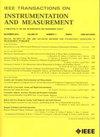Dynamic Response Testing Based on Pulsed Laser and WOA-BP Neural Network
IF 5.6
2区 工程技术
Q1 ENGINEERING, ELECTRICAL & ELECTRONIC
IEEE Transactions on Instrumentation and Measurement
Pub Date : 2025-02-20
DOI:10.1109/TIM.2025.3541694
引用次数: 0
Abstract
Laser heating has become a common means of dynamic response testing, but accurate measurement of the dynamic response time poses a challenge, mainly due to the interference from the thermophysical parameters of K-type thin-film thermocouple, temperature measurement environments, and stray signals. To address this issue, this article designs a dynamic response testing platform for thermocouples based on lasers and constructs a WOA-BP algorithm model. This model aims to accurately predict the dynamic response time and output peak voltage of the thermocouple, providing guidance for parameter optimization during the experimental process and ensuring efficient capture of the thermocouple’s dynamic response signals. Meanwhile, this article compared the WOA-BP algorithmic model with back propagation (BP) and other optimized BP models, evaluated by RMSE, MAE, and R2. The results demonstrate that with the guidance of parameter optimization by the WOA-BP algorithm model, the dynamic testing system is capable of accurately performing dynamic performance tests on thermocouples. Besides, the dynamic response time is inversely proportional to laser power and directly proportional to laser pulsewidth, but independent of repetition frequency. The output peak voltage increases with the increase of laser power and pulsewidth, but is also independent of laser repetition frequency. And the WOA-BP algorithm model can predict dynamic response time and output peak voltage accurately, whose R2 values of dynamic response time and output peak voltage are 0.9954 and 0.9982, the RMSE values are 0.5766 and 0.2981, and the MAE values are 0.4152 and 0.2700, respectively, being the best compared with BP, PSO-BP, GA-BP, MFO-BP, and GWO-BP prediction models.求助全文
约1分钟内获得全文
求助全文
来源期刊

IEEE Transactions on Instrumentation and Measurement
工程技术-工程:电子与电气
CiteScore
9.00
自引率
23.20%
发文量
1294
审稿时长
3.9 months
期刊介绍:
Papers are sought that address innovative solutions to the development and use of electrical and electronic instruments and equipment to measure, monitor and/or record physical phenomena for the purpose of advancing measurement science, methods, functionality and applications. The scope of these papers may encompass: (1) theory, methodology, and practice of measurement; (2) design, development and evaluation of instrumentation and measurement systems and components used in generating, acquiring, conditioning and processing signals; (3) analysis, representation, display, and preservation of the information obtained from a set of measurements; and (4) scientific and technical support to establishment and maintenance of technical standards in the field of Instrumentation and Measurement.
 求助内容:
求助内容: 应助结果提醒方式:
应助结果提醒方式:


